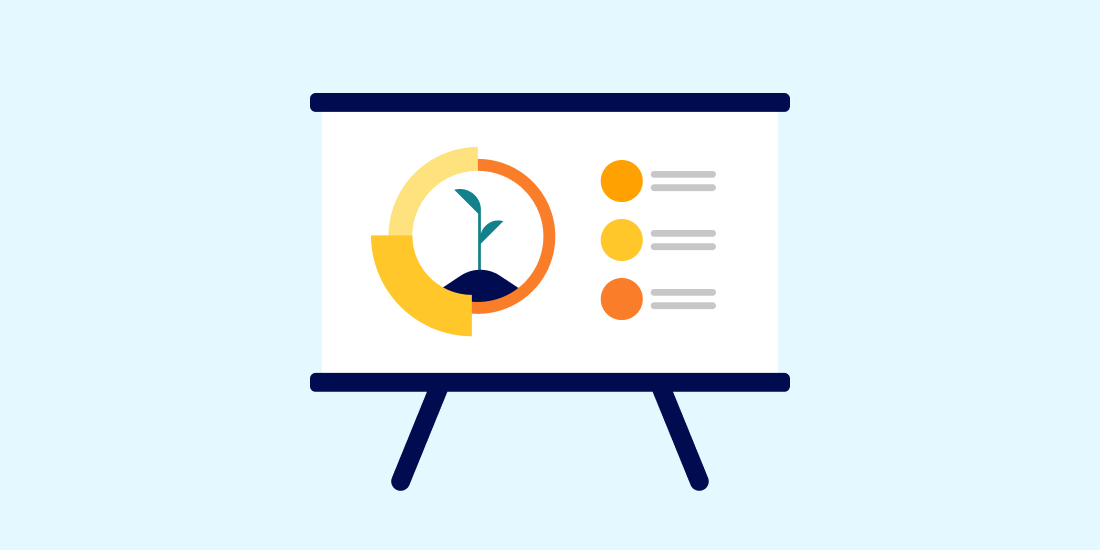Asset Types

Featured articles
-
![]()
How socially responsible investing connects your holdings to your heart
Learn more about this increasingly-popular category of investing.
How socially responsible investing connects your holdings to your heart Learn more about this increasingly-popular category of investing. Socially responsible investing (SRI), also known as environmental, social, and governance (ESG) investing, screens for companies that consider both their returns and their responsibility to the wider world. It’s a growing market for investors, with assets totaling $30 trillion as of 2022. We launched our first SRI portfolio back in 2017, and have since expanded to a lineup of three options: Broad Impact Social Impact Climate Impact All three are globally-diversified, low-cost, and built to help align your investing with your values. So let’s explore a few ways they do that, before tackling a common question about the SRI category in general: performance. How our Social Impact portfolio lifts up underserved groups Social Impact uses the Broad Impact portfolio’s foundation while adding a trio of funds focused on helping underserved groups get on equal footing. There’s $SHE and $JUST, which screen for U.S. companies demonstrating a commitment toward gender and social equality, respectively. Then there’s $VETZ, our latest addition to the portfolio. $VETZ is the first of its kind: a publicly-traded ETF that mainly invests in loans to active and retired U.S. service members, and the survivors of fallen veterans. These types of home and small-business loans have historically helped diversify portfolios, and they also help lower borrowing costs for veterans and their families. And unlike $SHE and $JUST, which are comprised of stocks, $VETZ is an all-bond fund. So even if you have a lower appetite for risk when investing, your SRI portfolio can maintain an exposure to socially responsible ETFs. How the $VOTE fund is shaking up shareholder activism Remember the “G” in ESG? It stands for governance, or how companies go about their business. Do they open up their books when necessary? Is their leadership diverse? Are they accountable to shareholders? On that last front, there’s the $VOTE ETF found in each one of our SRI portfolios. On the surface, it seems like a garden variety index fund tracking the S&P 500. Behind the scenes, however, it’s working to push companies toward positive environmental and social practices. It does this by way of “proxy” voting, or voting on behalf of the people who buy into the fund. Engine No. 1, the investment firm that manages $VOTE, puts these proxy votes to use during companies’ annual shareholder meetings, where individual shareholders, or the funds that represent them, vote on decisions like board members and corporate goals. In 2021, Engine No. 1 stunned the corporate world by persuading a majority of ExxonMobile shareholders to vote for three new board members in the name of lowering the company’s carbon footprint. And it did all this in spite of holding just .02% of the company’s shares itself. Not a bad return on investment, huh? Does SRI sacrifice gains in the name of good? We now stand eye-to-eye with the elephant in the room: performance. Worrying about returns is common regardless of your portfolio, so it’s only natural to question how socially responsible investing in general stacks up against the alternatives. Well, the evidence points to SRI comparing quite well. According to a survey of 1,141 peer-reviewed papers and other similar meta-reviews: The performance of SRI funds has “on average been indistinguishable from conventional investing.” And while the researchers note that it’s “likely that these propositions will evolve,” they also found evidence that SRI funds may offer “downside” protection in times of social or economic crisis such as pandemics. Your socially responsible investing, in other words, is anything but a charity case. Simplifying the socially responsible space Not long ago, SRI was barely a blip on the radar of everyday investors. If you were hip to it, you likely had just two options: DIY the research and purchase of individual SRI stocks Pay a premium to buy into one of the few funds out there at the time Those days are thankfully in the past, because our portfolios make it easy to express your values through your investing. And our team of investing experts regularly seeks out new funds like $VETZ and updated SRI standards that strive to deliver more impact while helping you reach your goals. Check out our full methodology if you’re hungry for more details. And if you’re ready to invest for a better world, we’ve got you covered. -
![]()
The most common asset classes for investors
Every type of asset gains or loses value differently, so it helps to know what those types are ...
The most common asset classes for investors Every type of asset gains or loses value differently, so it helps to know what those types are and how they work. An asset class is a name for a group of assets that share common qualities and behave similarly in the market. They’re governed by the same rules and regulations, and gain or lose value based on the same factors and circumstances. Different asset classes have relatively little in common, and tend to have fluctuations in value that are imperfectly correlated. Common asset classes include: Equities (stocks) Fixed income (bonds) Cash Real Estate Commodities Cryptocurrencies Alternative investments Financial Derivatives Within these groups, there are several assets people commonly invest in. The most common types of assets for investors The three financial assets you may hear about the most are stocks, bonds, and cash. A strong investment portfolio often includes a balance of these assets, or combines them with others. Let’s take a closer look at each of these. Stocks A stock is a type of equity. It’s basically a tiny piece of a company. When you invest in stocks, you become a partial “owner” of the companies that issued those stocks. You don’t own the building, and you can’t go bossing around the employees, but you’re a shareholder. Your stock’s value is directly tied to the company’s profits, assets, and liabilities. And that means you have a stake in the company’s success or failure. Stocks are volatile assets—their value changes often—and they have historically had the greatest risk and highest returns out of these three asset categories (stocks, bonds and cash). Choosing stocks from a wide range of companies in different industries can be a smart way to diversify your portfolio. Bonds A bond represents a portion of a loan. Its value to the bondholder comes from the interest on the loan. Bonds are typically more stable than stocks—lower risk, lower reward. Bonds belong to the “fixed income” asset class, which focuses on preserving capital and income, and tend to depend on different risk variables than stocks. If a company has a bad quarter, that’s probably not going to affect the value of your bond, unless they have a really bad quarter then default on their loan. When stock markets have a bad month, investors tend to flock to safer asset classes. In those cases, returns on bonds may outperform returns from the stock market. Something else to consider with bonds is the impact of interest rates and inflation. When interest rates increase or decrease, they directly affect how much bond interest you accrue. And since bonds generate lower returns than stocks, they may struggle at times to beat inflation. Cash With cash investments, things like money market accounts and certificates of deposit (CDs), you’re basically loaning cash (often to a bank) in exchange for interest. This is usually a short-term investment, but some cash investments like CDs can lock up funds for a few years. These investments are often low-risk because you can be confident they will generate a return, even though it might be lower than returns for other types of asset classes. Cash investments offer higher liquidity, meaning you can more quickly sell or access these assets when you need the money. As such, the return you get is typically lower than what you’d achieve with other asset classes. Investors therefore tend to park the money they need to spend in the near-term in cash investments. Other common assets Those are the big three. But investors also invest in real estate, commodities, alternative asset classes, financial derivatives, and cryptocurrencies. Each of these asset classes come with their own set of risk factors and potential advantages. What about investment funds? An investment fund is a basket of assets that can include stocks, bonds, and other investments. The most common kinds of funds you can invest in are mutual funds and exchange-traded funds (ETFs). Mutual funds and ETFs are similar, but there’s a reason ETFs are gaining popularity: they’re usually cheaper. ETFs tend to be less expensive to manage and therefore typically have lower expense ratios. Additionally, mutual funds charge a fee to cover their marketing expenses. ETFs don’t. Mutual funds are also more likely to be actively managed, so they can have more administrative costs. Most ETFs are funds that simply track the performance of a specific benchmark index (e.g., the S&P 500), so there’s less overhead to manage ETFs than mutual funds. ETFs have another advantage: you can buy and sell them on the stock exchange, just like stocks. You can only sell a mutual fund once per day, at the end of the day. That’s not always the best time. Being able to sell at other times opens the door to other investment strategies, like tax-loss harvesting. How to choose the right assets When you start investing, it’s hard to know what assets belong in your investment portfolio. And it’s easy to make costly mistakes. But if you start with a goal, choosing the right assets is actually pretty easy. Say you want $100,000 to make a down payment on a house in 10 years. You have a target amount and a deadline. Now all you have to do is decide how much risk you’re willing to take on and choose assets that fit that risk level. For many investors, it’s simply a matter of balancing the ratio of stocks and bonds in your portfolio. -
![]()
Inside the investing kitchen, part 1
The recipe for a better portfolio, and the science behind a safer nest egg.
Inside the investing kitchen, part 1 The recipe for a better portfolio, and the science behind a safer nest egg. Jamie Lee isn’t a Top Chef, but he knows his way around the kitchen. He dabbles in sous vide with the help of a sous chef (his 6-year-old daughter). He loves smoking salmon low and slow on a pair of pellet grills. And in some ways, his day job on the Betterment Investing team resembles the culinary world as well. He and his teammates work in a test kitchen of sorts, defining and refining the recipes for our low-cost, high-performing, and globally-diversified portfolios. They size up ingredients, pair flavors, and thoughtfully assemble the courses of each “meal.” All in service of customers with varying appetites for risk. It's highly-technical work, but we wouldn't be Betterment if we didn't make our methodologies as accessible as possible. So whether you're kicking the tires on our services, or you're already a customer and simply curious about the mechanics of your money machine, come along for a three-part, behind-the-scenes look at how we cook up a better portfolio. Here in part 1, we'll explore how we allocate your investing at a high level. In part 2, we'll zoom in to our process for selecting specific funds. And in part 3, we'll show you how we handle thousands of trades each day to keep our customers’ portfolios in tip-top shape. The science behind a safer nest egg Betterment customers rely on Jamie and team to do the heavy lifting of portfolio construction. They distill handfuls of asset classes, a hundred-plus risk levels, and thousands of funds into a simple yet eclectic menu of investment options. And underpinning much of this process is something called Modern Portfolio Theory, a framework developed by the late American economist Harry Markowitz. The theory revolutionized how investors think about risk, and led to Markowitz winning the Nobel Prize in 1990. Diversification lies at the heart of Modern Portfolio Theory. The more of it your investing has, the theory goes, the less risk you're exposed to. But that barely scratches the surface. One of the meatiest parts of building a portfolio (and by extension, diversifying your investing) is how much weight to give each asset class, also known as asset allocation. Broadly speaking, you have stocks and bonds. But you can slice up the pie in several other ways. There’s large cap companies or less established ones. Government debt or the corporate variety. And even more relevant as of late: American markets or international. Jamie came of age in South Korea during the late 90s. Back here in the States, the dot-com bubble was still years away from popping. But in South Korea and Asia more broadly, a financial crisis was well underway. And it changed the trajectory of Jamie’s career. His interest in and application of math shifted from computer science to the study of markets, and ultimately led to a PhD in statistics. Jamie Lee (right) helps optimize the weights of asset classes in Betterment portfolios. For Jamie, the interplay of markets at a global level is fascinating. So it’s only fitting that when optimizing asset allocations for customers, Jamie and team start with the hypothetical "global market portfolio," an imaginary snapshot of all the investable assets in the world. The current value of U.S. stocks, for example, represents about two-thirds the value of all stocks, so it's weighted accordingly in the global market portfolio. These weights are the jumping off point for a key part of the portfolio construction process: projecting future returns. Reverse engineering expected returns “Past performance does not guarantee future results.” We include this type of language in all of our communications at Betterment, but for quantitative researchers, or “quants,” like Jamie, it’s more than a boilerplate. It’s why our forecasts for the expected returns of various asset classes largely aren't based on historical performance. They're forward-looking. "Past data is simply too unreliable," says Jamie. "Look at the biggest companies of the 90s; that list is completely different from today.” So to build our forecasts, commonly referred to in the investing world as Capital Market Assumptions, we pretend for a moment that the global market portfolio is the optimal one. Since we know roughly how each of those asset classes performs relative to one another, we can reverse engineer their expected returns. This robust math is represented by a deceivingly short equation—μ = λ Σ ωmarket—which you can read more about in our full portfolio construction methodology. From there, we simulate thousands of paths for the market, factoring in both our forecasts and those of large asset managers like BlackRock to find the optimal allocation for each path. Then we average those weights to land on a single recommendation. This “Monte Carlo" style of simulations is commonly used in environments filled with variables. Environments like, say, capital markets. The outputs are the asset allocation percentages (refreshed each year) that you see in the holdings portion of your portfolio details Hypothetical portfolio; for illustration only At this point in the journey, however, our Investing team's work is hardly finished. They still need to seek out some of the most cost-effective, and just plain effective, funds that give you the intended exposure to each relevant asset class. For this, we need to head out of the test kitchen and into the market. So don’t forget your tote bag.
Considering a major transfer? Get one-on-one help with one of our experts. Explore our licensed concierge
All Asset Types articles
-
![]()
The proactive strategy behind passive investing
The proactive strategy behind passive investing Oct 13, 2025 11:35:02 AM And when actively-managed funds may give your portfolio an edge. Key takeaways Passive and active investing strategies both require proactive planning while differing in their end goals. Passive investing seeks to match market returns, typically by way of index or exchange traded funds that closely mirror a market. Passive funds cost significantly less on average and often perform better in more efficient asset classes like U.S. Large Cap stocks. Active investing aims to beat the market by selecting the specific securities you or a manager believe will outperform relative to their peers. Active funds cost 10x more on average, but tend to perform better in less efficient classes such as U.S. core bonds. Many institutional investors—Betterment included—employ a mix of both strategies. Of all the confusing ‘this or that’s’ of investing, few are more misleading than the choice between ‘active’ and ‘passive’ strategies. Passive sounds hands-off—but in practice, it’s anything but. Take our automated investing offering. While it uses a blend of both strategies, it falls more on the passive end of the spectrum. Yet on any given trading day, we’re … Scanning for tax loss harvesting opportunities by the minute Executing thousands of trades to keep customers’ portfolios humming Researching dozens of new funds, slotting in new options quarterly to improve our portfolios’ desired exposures at lower cost And every year, we refresh the asset weights of all our portfolios, making sure they align with the latest global market environment and long-term projections. Pretty lively for a passive strategy, no? So if passive investing is a bit of a misnomer, what exactly sets it apart from more "active" approaches? And which situations are each best suited for? For those helpful distinctions, let’s start with their respective mission statements. Two missions, two mindsets Both passive and active investing involve someone, sometimes a “retail” investor such as yourself, sometimes a single professional or an entire firm, making decisions on what to invest in. The key difference boils down to their objectives and related costs: With active investing, you're aiming to beat the market by selecting the specific securities you believe will outperform their peers. While the costs of actively-managed funds are trending downward, they’re still 10x more expensive on average than that of their passively-indexed peers. With passive investing, you're seeking to simply match a market’s returns. A lower bar, for sure, but also at a lower cost. The fees or “expense ratios” charged by passive funds often fall below 0.10%. Which is better? Well, beating the market is easier said than done, especially in the long run. Consider the S&P 500, for example, the most popular pick in the market for U.S. Large Cap stocks. Fewer than 15% of similar actively-managed funds have outperformed it for stretches of five years or longer. But that doesn't mean there’s no role to play for active investing, even for the long-term, risk-averse investor. Some markets aren't as accurately priced or “efficient” as the S&P. With the right expertise and right access to information, there’s relatively more value to be had in smaller markets like those in developing countries, and even more so in bond markets. The question then becomes, who’s the best at sniffing out those deals? When investing in an actively-managed fund, you’re investing in the team behind it as much as the securities themselves. Conducting due diligence on the team and their track record is critical. That’s why when using these types of ETFs in our portfolios, we use a robust quantitative and qualitative research approach to size up the teams behind them. There’s also the matter of niche markets, and whether a passive index fund is even available. One such example is the Academy Veteran Bond ETF (VETZ), one of the newest actively-managed funds we’ve brought on board. VETZ mainly invests in loans to active and retired U.S. service members and the survivors of fallen veterans, making it ideal for both active management and our Socially Responsible Investing’s Social Impact portfolio. Lastly, a lot of everyday investors simply enjoy directing some portion of their investing themselves. When we surveyed Betterment customers about their overall investing habits, ¾ of them said they mix in some self-directed investing alongside their managed portfolios. There’s nothing wrong with a little responsible fun like this. Picking your own securities—even alongside a managed portfolio—can be exciting and educational. And all that choice naturally leads to the next big difference between active and passive investing. The building blocks of a portfolio Some of the active/passive split can be seen in a given portfolio’s pieces, and how granular the investor gets. Do you want to start at the individual security level, picking single stocks and bonds yourself, or paying someone to do that for you? Or would you rather zoom out and start with funds that track a predetermined list or “index” of said securities? These can cover entire asset classes, like treasury bonds, or represent a “sub-asset” slice of a market, like short-term treasury bonds. Stock indexes are weighted by the current value of the companies within them. These market "capitalizations" ebb and flow, of course, so the makeup of indexes and the funds that track them naturally evolve over time. They're "self-cleansing" in that sense. Lower performers make up less and less of the index over time, just as higher performers become bigger slices. It's why the bulk of the S&P 500 today looks very different than it did 20 years ago. The shape-shifting S&P (top companies by market valuation) 2025 2005 1. Nvidia Corp (NVDA) 1. GE Aerospace (GE) 2. Microsoft Corp (MSFT) 2. Exxon Mobil Corp (XOM) 3. Apple Inc (AAPL) 3. Microsoft Corp (MSFT) 4. Alphabet Inc (GOOG) 4. Citigroup Inc (C) 5. Amazon.com Inc (AMZN) 5. Walmart Inc (WMT) Source: FactSet There's also the hybrid “smart beta” approach to index fund investing. Here, a fund manager starts with a preset index before actively tailoring it based on a set of quantitative investment factors. We offer one such option in the form of the Goldman Sachs Smart Beta portfolio, which invests more heavily in companies with at least one of the following factors: They’re cheap relative to their accounting value. They tend to be sustainably profitable over time. Their returns are relatively low in volatility. They’ve been trending strongly upward in price. Use the right tool for the job All of this may be a lot to take in. But we can simplify things by bringing it all back to the big picture. Active investing seeks to beat the market. It’s typically higher-cost, and comes with relatively higher risk. In specific use cases, however, an experienced team can outperform related indexes. Passive investing aims to replicate market returns at a lower cost, often over the long-term. It starts with the building block of funds instead of individual securities. As is so often the case with investing, this isn’t an either/or proposition. We use both strategies—and sometimes a blend—at Betterment, because each has a role to play in building wealth. Regardless of whose hands are guiding your investing, we give you the tools to grow your money with confidence. -
![]()
Inside the investing kitchen, part 3
Inside the investing kitchen, part 3 Aug 15, 2025 12:00:00 PM Order up! See how we handle thousands of trades each day to keep customers’ portfolios humming. When a chef plates a meal, they typically send it off, never to be seen again. But serving up an investing portfolio is an ongoing affair. Deposits come in. Withdrawals go out. Asset classes grow and shrink as the market moves. Rebalancing takes place on the regular. All of this requires daily trading. And this buying and selling of securities is among the most intricate and highly-regulated pieces of our operations. So while the first two parts of this series cover the recipes and ingredients behind our investing, our final course focuses on the team—and tech—behind every transaction. What happens when you hit "deposit" Cara Daly is an adventurer at heart. An avid surfer and the daughter of a flight attendant, she racks up air miles chasing waves and visiting family in Ireland. So naturally, she's gravitated toward one of the more thrill-seeking roles on our Investing team: Capital Markets. From the minute markets open each day, Cara and team monitor the action, making sure our customers' orders go smoothly. These trades can amount to hundreds of millions of dollars in a single day, and the system that executes them all is in many ways our secret sauce. It's custom-built (a rarity in the industry) and plays the role of Mission Control. When a customer clicks "deposit," for example, that single click gets translated into a series of purchases. These in turn get bundled up with other purchases of a like-kind and turned into orders, which are then executed at calibrated intervals as a part of our managed trading strategy. This sort of intentional trading is incredibly important because of the scale of our operations. We manage more than $56 billion of assets, making us the largest independent robo-advisor out there. We may not "make" markets, but our trading volume is big enough to potentially influence them. So we need to be mindful of how and when our trades get executed. “Say the market trades $10 million of a hypothetical security on any given day,” Cara says. “If our customers happen to want $20 million of it, meeting all that demand without minding the bigger context could drive up the price.” To navigate these executional challenges, we deploy multiple strategies as needed (see below for a few examples), evaluating and calibrating each on a continuous basis. Taken altogether, they help ensure our customers' purchases and sales get treated fairly in the market. Waiting out the first half hour after markets open before starting our trading. This helps sidestep some of the volatility that's common early in the day. Trading periodically throughout the day, and randomizing when customers’ orders are processed. It's possible that prices can loosely correlate with certain times of the day, so we don't want that to consistently affect any one customer. Briefly holding back on “system-generated” trading (proactive rebalancing, for example) for any particular fund if its trading reaches a certain threshold relative to its average daily volume. This helps make sure “user-directed” trading (when customers make deposits or withdrawals, to name a few examples) can continue regardless. Partnering with industry experts like Apex to route and execute orders across multiple firms, helping us stay at the forefront of the evolving market landscape. This access to different execution venues also helps seek out the most favorable terms for customers—whether that’s price, speed, or overall execution quality. Switching gears from execution to tax optimization, we also use both primary and secondary funds for most of our asset classes. These backup “tickers” come into play during times of heightened volatility in markets. Moments that can make or break an investing strategy. Acing the stress test of market volatility More often than not, it's business as usual on our Capital Markets team, and that's by design. But during stretches of extreme volatility, when trading volume really picks up and prices can swing wildly from hour to hour, it's all hands on deck. Cara and company monitor our trading system for signs that additional oversight may be needed. They ease emerging bottlenecks in real time and keep things running smoothly, at times enlisting the support of our Trading Engineering team. Cara Daly (left) helps make sure customers’ daily trading goes smoothly. Take April of 2025 for example. Early in the month, the Trump administration caught investors off guard by announcing a series of tariffs way higher and way earlier than expected. The announcement, and the inconsistent messaging that followed, set off a wild, weeks-long stretch of trading. Prices of some securities cratered in the morning only to recover by day's end. Our systems not only weathered this storm, but capitalized on it, taking advantage of small windows of time to harvest tens of millions of dollars in temporary losses for customers before prices recovered. This strategy of tax loss harvesting helps sprinkle tax advantages on a portion of customers' taxable investing, and it wouldn’t be possible without the help of those aforementioned secondary tickers. These funds help reduce “wash sales” while maintaining customers’ desired exposures and risk levels. Something delicious is simmering The image of a golden harvest is an apt one, considering this series looks at our Investing team's work through a culinary lens. Many of our customers come to us not necessarily for a single serving of returns, but to plant the seeds for self-sustaining, long-term wealth. A harvest that supports a more-fulfilling life. Cara and the rest of our Capital Markets experts are a big part of that lifecycle, tending to thousands of daily trades that optimize our customers’ portfolios over and over again. That's the beauty of using technology as a tool to expand our own capabilities and deliver results at scale. It's a people-led process. We became a trusted leader in automated money management not because of our tech, but because of the people who build and use it each day. Specialists like Cara, Josh, and Jamie—They're our secret ingredient, working in service of customers hungry for a better way to invest. Bon appétit. -
![]()
Inside the investing kitchen, part 2
Inside the investing kitchen, part 2 Jun 24, 2025 11:25:00 AM See how we source the higher-quality, lower-cost funds that fill up your portfolio. A lot goes into the making of a single Betterment portfolio. So much that we're spreading out this showcase of our Investing team's work over three parts. In part 1, we explore how we allocate customers’ investing at a high level, and in part 3, we show how we handle thousands of trades each day to keep their portfolios humming. And here in part 2, we zoom into a topic that may be a little more relatable for the everyday investor: picking the actual investments themselves. If asset allocation is like refining a recipe, then today's topic of fund selection is all about the sourcing of higher-quality, lower-cost ingredients. And for that, we turn our eye toward a market of another kind. Josh Shrair specializes in shopping capital markets here at Betterment, picking the funds that fill up your portfolio's respective allocations. His line of work looked a little different decades ago, back when his step dad was working as a trader on Wall Street. Back then, this level of attention to portfolio construction and fund selection was typically in service of only the ultra wealthy. But now, Josh and team navigate a rapidly-expanding universe of investments on behalf of everyday investors. Why shopping for funds isn't always so simple On one hand, the recent explosion of investment options has been great for investors. Increased competition drives down costs and opens up access to newer, more niche markets. But more choice also leads to more complexity. Take Exchange Traded Funds (ETFs), our preferred building block for portfolios thanks to their transparency, tax efficiency, and lower costs. They bundle up hundreds, and sometimes thousands, of individual stocks and bonds. But even ETFs are multiplying fast. In 2024 alone, 723 new ones launched, bringing the total to nearly 4,000. To illustrate this abundance, let's say your asset allocation calls for a heaping serving of “Large Cap” stocks, meaning companies valued at $10 billion or more. Nearly 500 ETFs populate this particular corner of the ETF universe. We can narrow that group down to 30 based on the specific exposure we’re looking for, like say U.S. Large Cap companies, or the S&P 500, a list or “index” of 500 of the biggest American companies. But the due diligence is hardly done. Some ETFs that track the S&P 500 follow it faithfully, while others put their own spin on it, which can open investors up to unintended exposure. Josh Shrair (second from left) helps navigate a rapidly-expanding universe of ETFs on behalf of Betterment customers. Just as crucially, their costs are all over the place, and higher fees can erode your returns in the long run. That's why the SPDR fund is currently our Core portfolio’s primary way of achieving U.S. Large Cap stock exposure. It offers both a low cost to hold (0.02%) and a low cost to trade (0.03% at the time of writing), making for a low overall cost of ownership. "Shopping for investments is a little like buying a car," Josh says. "The total cost is way more than the sticker price." How we calculate cost of ownership Part of our role as a fiduciary, someone who's legally obligated to act in their clients' best interests, is conducting a deep and unbiased evaluation of the ETFs used in our portfolios. The process Josh and team use is entirely "open architecture," meaning we’re not obligated to use funds from any particular provider. Instead, we strive to select the most optimal ones in terms of cost and exposure. It helps that Betterment itself doesn't make, manage, and sell funds, which means we avoid the inherent conflict of interest some advisors face when they also act as a fund manager. These firms can be tempted to steer customers toward their own funds, even when a better alternative exists. So we take pride in the due diligence behind our fund selection, and that begins with our "cost of ownership" scoring methodology. It factors in the two types of costs mentioned earlier: the cost to "hold" or own a fund, also known as its expense ratio, and the cost to trade it. As you'll see in part 3 of this series, a portfolio is hardly static. Deposits come in. Withdrawals go out. Rebalancing takes place on the regular. All of this requires daily trading, so the cost of those transactions matters to your investing's bottom line. The cost-to-trade is also known as the "bid-ask spread," or the markup that traders expect when selling a share. It's how they make money, and similar to wholesalers and retailers like Costco, the bigger the fund, the smaller the margins a trader can live with. Seeking out these value buys is how we're able to deliver globally-diversified portfolios at a fraction of the cost of alternatives on the market today. And we’re never done shopping. Our preferred funds are updated multiple times throughout the year. Primed for the purchase There's a lot more to our fund selection methodology, especially for funds that aren’t tied to a specific index, but are instead made from scratch. Some fund managers like Goldman Sachs, where Josh worked earlier in his career, also blend both approaches into a “smart beta” strategy. We offer one such portfolio alongside our Betterment-built collections. But for the sake of this series, let's pretend for a moment that our tote bags are full, and we're ready to check out. It’s time to meet the team behind every transaction at Betterment.
Looking for a specific topic?
- 401(k)s
- 529s
- Asset types
- Automation
- Benchmarks
- Bonds
- Budgeting
- Compound growth
- Costs
- Diversification
- Donating shares
- ETFs
- Education savings
- Emergency funds
- Financial advisors
- Financial goals
- Flexible portfolios
- Getting started investing
- Health Savings Accounts
- Home ownership
- IRAs
- Interest rates
- Investing accounts
- Market volatility
- Performance
- Portfolios
- Preparing to retire
- Retirement income
- Retirement planning
- Risk
- Rollovers and transfers
- Roth accounts
- Stocks
- Tax Coordination
- Tax loss harvesting
- Taxable accounts
- Taxes
No results found






